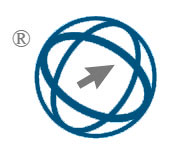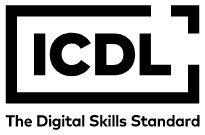Machine Learning-Based Analysis of Research Policy Impacts on Academic Performance Metrics
Abstract
Artificial Intelligence (AI) has significantly transformed research policy analysis by enabling data-driven decision-making and predictive analytics. Research policies play a crucial role in shaping academic and institutional research outcomes, influencing funding allocation, citation impact, and overall research productivity. This study employs Machine Learning (ML) techniques to examine the effect of policy, outcome, and control factors on research performance. The dataset, sourced from an online repository on GitHub, underwent preprocessing steps, including handling missing values and feature selection to identify the most influential variables. The study applies Linear Support Vector Classifier (LinearSVC) to predict three key research metrics: research productivity, citation impact, and innovation index. Experimental results demonstrate that LinearSVC achieved an accuracy of 97% (F1-score: 0.96, AUCROC: 0.62) for research productivity prediction, 94% (F1-score: 0.93, AUC-ROC: 0.93) for citation impact, and 95% (F1-score: 0.95, AUC-ROC: 0.96) for the innovation index. These findings highlight the robustness of AI-driven analysis in evaluating research policies and optimizing institutional strategies. By leveraging ML models, this study provides insights into policy effectiveness, enabling institutions to refine their research strategies for improved scientific innovation and societal advancement.
Full Text:
PDFReferences
C. Boswell and K. Smith, “Rethinking policy ‘impact’: four models of research-policy relations,” Palgrave Commun, vol. 3, no. 1, p. 44, 2017, doi: 10.1057/s41599-017-0042-z.
T. O’riordan, “Research policy and review 6. Future directions for environmental policy 1 ^,” 1985.
O. V. Spivakovsky, S. A. Omelchuk, V. V. Kobets, N. V. Valko, and D. S. Malchykova, “INSTITUTIONAL POLICIES ON ARTIFICIAL INTELLIGENCE IN UNIVERSITY LEARNING, TEACHING AND RESEARCH,” Information Technologies and Learning Tools, vol. 97, no. 5, pp. 181–202, Oct. 2023, doi: 10.33407/itlt.v97i5.5395.
S. Kuruvilla, N. Mays, A. Pleasant, and G. Walt, “Describing the impact of health research: a Research Impact Framework,” BMC Health Serv Res, vol. 6, no. 1, p. 134, 2006, doi: 10.1186/1472-6963-6-134.
B. Lingard, “The impact of research on education policy in an era of evidence-based policy,” Critical Studies in Education, vol. 54, no. 2, pp. 113–131, Jun. 2013, doi: 10.1080/17508487.2013.781515.
P. M. Krafft, M. Young, M. Katell, K. Huang, and G. Bugingo, “Defining AI in Policy versus Practice,” in Proceedings of the AAAI/ACM Conference on AI, Ethics, and Society, in AIES ’20. New York, NY, USA: Association for Computing Machinery, 2020, pp. 72–78. doi: 10.1145/3375627.3375835.
M. K. Hasan Chy and O. Nana Buadi, “Role of Machine Learning in Policy Making and Evaluation,” International Journal of Innovative Science and Research Technology (IJISRT), pp. 456–463, Oct. 2024, doi: 10.38124/ijisrt/IJISRT24OCT687.
K. Amarasinghe, K. T. Rodolfa, H. Lamba, and R. Ghani, “Explainable machine learning for public policy: Use cases, gaps, and research directions,” Data Policy, vol. 5, Feb. 2023, doi: 10.1017/dap.2023.2.
R. Wang, J. Li, W. Shi, and X. Li, “Application of Artificial Intelligence Techniques in Operating Mode of Professors’ Academic Governance in American Research Universities,” Wirel Commun Mob Comput, vol. 2021, 2021, doi: 10.1155/2021/3415125.
B. D’Ippolito and C.-C. Rüling, “Research collaboration in Large Scale Research Infrastructures: Collaboration types and policy implications,” Res Policy, vol. 48, no. 5, pp. 1282–1296, 2019, doi: https://doi.org/10.1016/j.respol.2019.01.011.
B. Álvarez-Bornstein and M. Bordons, “Is funding related to higher research impact? Exploring its relationship and the mediating role of collaboration in several disciplines,” J Informetr, vol. 15, no. 1, p. 101102, 2021, doi: https://doi.org/10.1016/j.joi.2020.101102.
B. Ibrahim, “Arab Spring’s effect on scientific productivity and research performance in Arab countries,” Scientometrics, vol. 117, no. 3, pp. 1555–1586, 2018, doi: 10.1007/s11192-018-2935-z.
S. Kumar, D. Sharma, S. Rao, W. M. Lim, and S. K. Mangla, “Past, present, and future of sustainable finance: insights from big data analytics through machine learning of scholarly research,” Ann Oper Res, 2022, doi: 10.1007/s10479-021-04410-8.
A. Ebadi, S. Tremblay, C. Goutte, and A. Schiffauerova, “Application of machine learning techniques to assess the trends and alignment of the funded research output,” J Informetr, vol. 14, no. 2, p. 101018, 2020, doi: https://doi.org/10.1016/j.joi.2020.101018.
J. A. V Tohalino and D. R. Amancio, “On predicting research grants productivity via machine learning,” J Informetr, vol. 16, no. 2, p. 101260, 2022, doi: https://doi.org/10.1016/j.joi.2022.101260.
C. C. Sarli, E. K. Dubinsky, and K. L. Holmes, “Beyond citation analysis: A model for assessment of research impact,” Journal of the Medical Library Association, vol. 98, no. 1, pp. 17–23, Jan. 2010, doi: 10.3163/1536-5050.98.1.008.
A. Reid, “Researching Environmental and Sustainability Education Policy: Slumbers and Awakenings,” Journal of Philosophy of Education, vol. 54, no. 4, pp. 838–865, Aug. 2020, doi: 10.1111/1467-9752.12474.
T. Verdonck, B. Baesens, M. Óskarsdóttir, and S. vanden Broucke, “Special issue on feature engineering editorial,” Mach Learn, vol. 113, no. 7, pp. 3917–3928, 2024, doi: 10.1007/s10994-021-06042-2.
F. K. Alarfaj, H. Ahmad, H. U. Khan, A. M. Alomair, N. Almusallam, and M. Ahmed, “Twitter Bot Detection Using Diverse Content Features and Applying Machine Learning Algorithms,” Sustainability (Switzerland), vol. 15, no. 8, Apr. 2023, doi: 10.3390/su15086662.
M. Ahmed, H. U. Khan, S. Iqbal, and Q. Althebyan, “Automated Question Answering based on Improved TF-IDF and Cosine Similarity,” in 2022 Ninth International Conference on Social Networks Analysis, Management and Security (SNAMS), 2022, pp. 1–6. doi: 10.1109/SNAMS58071.2022.10062839
DOI: https://doi.org/10.31449/inf.v49i19.8154

This work is licensed under a Creative Commons Attribution 3.0 License.









